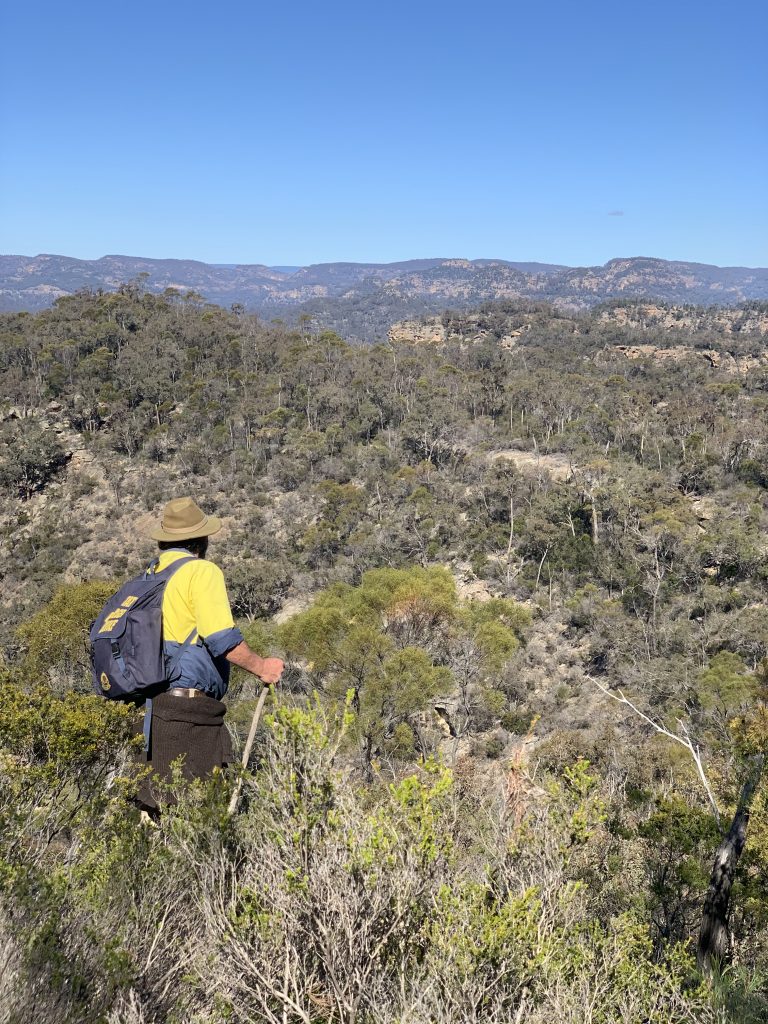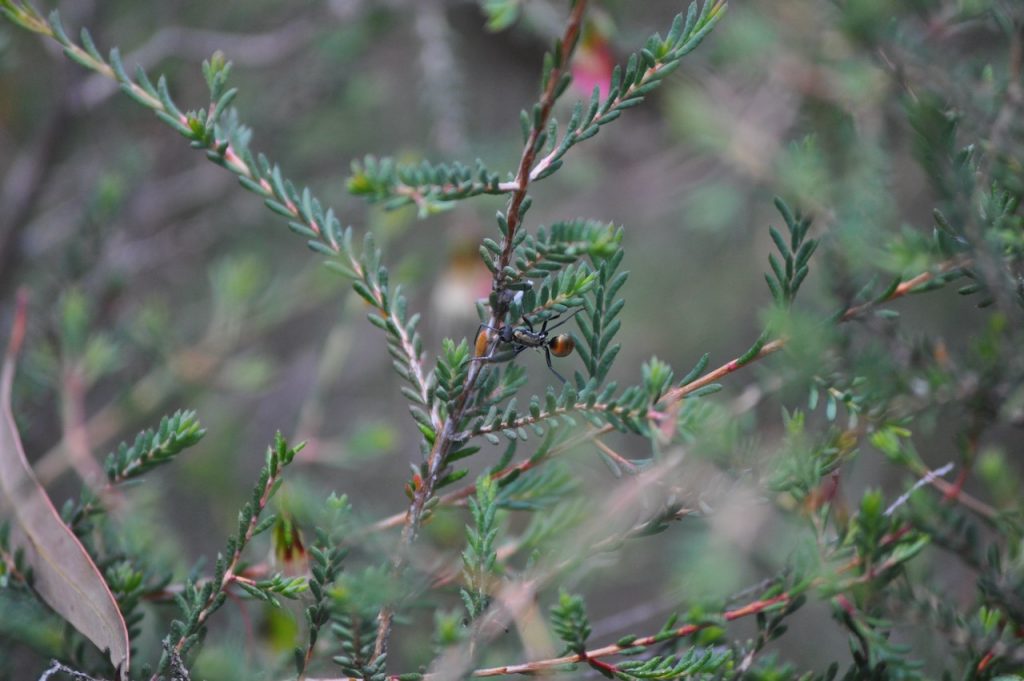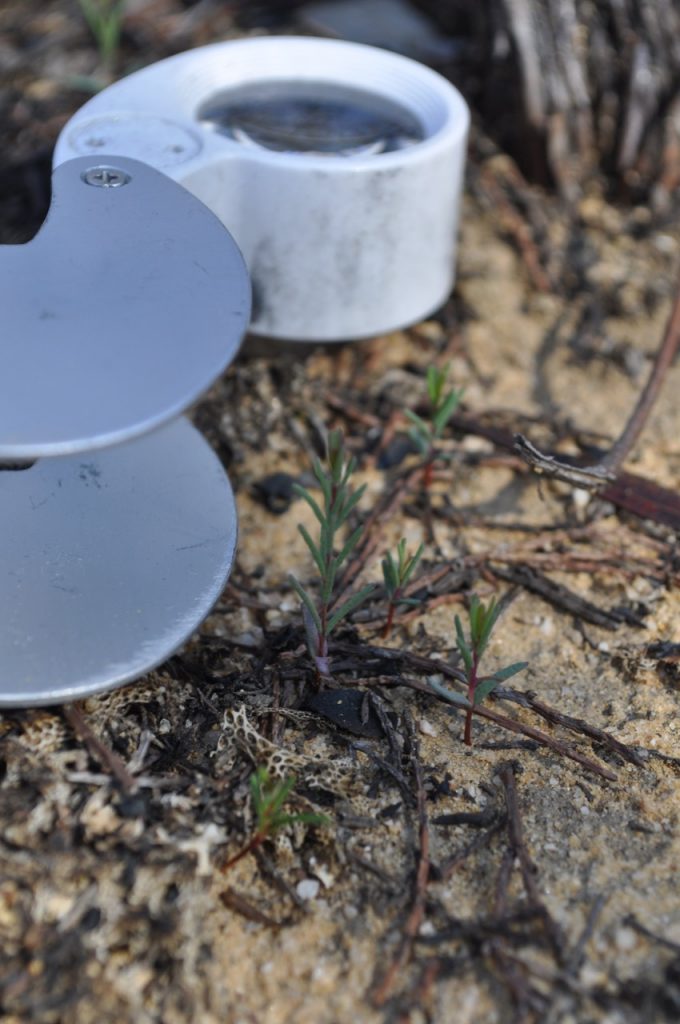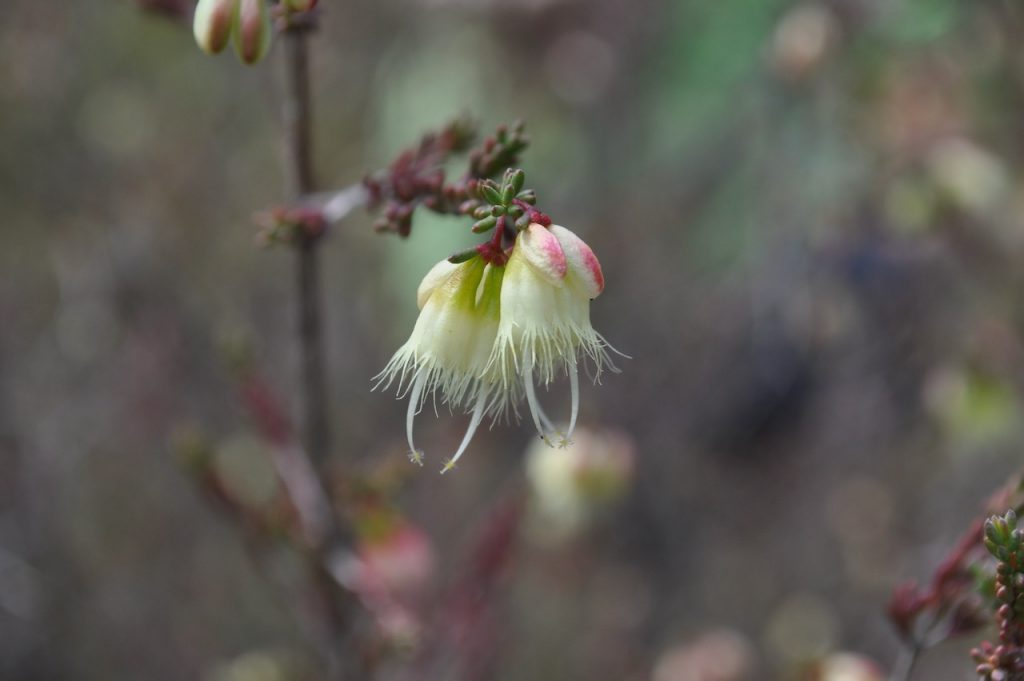Your cart is currently empty!
Searching for Fairy Bells
We have been working with Hunter Local Land Services to look for the rare plant Homoranthus darwinioides known as Fairy Bells.
Homoranthus darwinioides is a “slender hairless shrub, characterised by its distinctive drooping flower heads, each consisting of two flowers on a stalk. Leaves are linear, cylindrical, 2-5 mm long in some populations, 6-11 mm long in others” (Threatened species profile, OEH website). It is distinguished from the similar species H. cernuus, by longer bracteoles and shorter leaves and its quirky and fantastic fragrance of artificial banana flavour (banana) when the leaves are crushed.
We started looking for this rare little shrub in Box Gum Grassy Woodland in and around Goulburn River National Park. In March of 2019, Dave, Paul, and members of Hunter Local Land Services set out to define and clearly establish the populations of the Fairy Bells and its importance in the shrubby under-storey of Box Gum Grassy Woodlands. Interestingly, we discovered that the populations in Goulburn River National Park occurred mainly among Red Ironbark, Brown Bloodwood, Black Pine and heathy open forests on sandstone ranges of the Sydney Basin and almost never in Box Gum Grassy Woodland.
Once the plant was found, we aimed to increase the amount of seed in the NSW Seed Bank, as there were only 9 single H. darwinioides seeds in their storage. Under licence, we collected 135g of seeds to ensure the continuation of these magic little plants.
In 2019-2020 the bushfires that tore through 18.6 million hectares of the country directly impacted the main population in Goulburn River NP. Dave, Paul and Claire returned to the sites in July 2020 to find that many of our sites that once held a healthy population, were completely black and barren. While it was a blow to the project, it allowed our project to evolve into not only looking for them but also establishing the ecology and the impact of fire on Fairy Bells.

On this trip, we investigated a herbarium entry from 1987 and followed this lead to a potential population at Cox’s Gap. We were unsuccessful in finding the population mentioned, but it certainly wasn’t a failure as the views on this hike were spectacular.
On our next trip in October 2020, we were joined by members of Hunter Local Land Services and the Hunter Aboriginal Riverkeepers Team and focused our efforts again on seed collection, with some success. Additionally, we set out to establish some of the pollinators of Fairy Bells. We set up some insect traps and some camera traps to try and capture any other animals that could interact with the plants. We discovered that flies and ants were the most common insects around the Fairy Bells.

Since the bushfire, there was new growth in every direction, however, our biggest concern during this trip was that there was no sign of new growth of H. darwinioides in the burnt areas. We were unsure if the surviving population had taken an enormous hit, as none of the burnt plants resprouted. Fortunately, in February 2021 we ventured back out and discovered hundreds of new seedlings throughout all the sites. We hypothesise that the seeds are smoke-germinated and therefore suggests that fire is an important process in the life cycle of these mysterious little plants.


